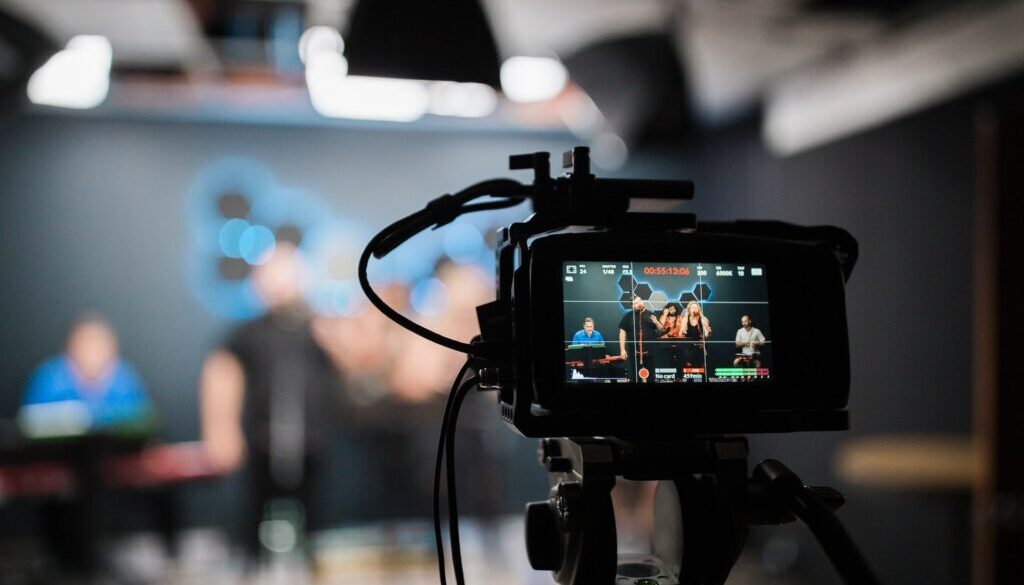10 Tips for Live Streaming Your Event
Are you looking to live stream your event? Whether it’s a company meeting, training seminar, or product launch, live streaming can help you reach a larger audience and create a more engaging experience for participants. Here are seven tips for planning and executing a successful live stream.
In today’s digital age, more and more organizations are streaming events to allow a global audience to participate in real-time. If you’re among those who are considering this option to gain a wider audience, here are ten tips to help you get your event online.
1. Plan Ahead
Like any other major project, planning is essential when streaming an event. Make sure to map out your approach beforehand and allocate enough time for rehearsals. This will help ensure a smooth live stream that runs without any hitches.
As you plan, it is important to keep in mind your event’s 3 main audiences when live streaming events:
-
The in-person attendees
-
The remote audience
-
Those who will watch the video recording of the event

2. Choose the right live streaming platform
There are a variety of live streaming platforms available, each with its own set of features and capabilities. Do your research to find the one that best meets your needs and integrates well with your existing event management system.
There are a few different options for your video stream:
-
Facebook live
-
Instagram live
-
YouTube
-
Zoom
If you’re live streaming an important conference, for example, using YouTube may be more appropriate as it has a greater audience. If you’re live streaming a more personal event, like a wedding, Facebook could be the better choice.
Social media may not be a good fit for your streaming events
However, a social media platform may not be the best fit for live streaming events. There are many very good streaming platforms can provide you with a custom fit for your live event.

3. Create engaging content
Your live stream audience will quickly lose interest if they’re not entertained or engaged. Plan your live streaming video accordingly and mix things up to keep viewers tuned in and improve audience engagement.
Music can increase engagement for your live video
This could include anything from live interviews and Q&As to musical performances or prize giveaways. Whatever you do, make sure it’s relevant to your event and able to hold people’s attention.

4. Promote your stream ahead of time
Once you’ve decided on the platform, start promoting your live stream well ahead of time.
Promote your live stream event by using:
-
Social media
-
Your website
-
Email
-
Blog post
-
Newsletter
-
Vlogs
Some streaming platforms will allow you to publish a schedule before you broadcast an event. You should also consider having your audience RSVP or register for the event through your website so that reminders can be sent.
Vlogs can be great promotional tools for events
Create video content in advance and use short video vignettes on social media to promote your virtual events.

5. Make sure you have a strong internet connection
This one is essential. There’s nothing worse than a live stream that keeps cutting out or the live video freezes because of a weak internet connection for your virtual events. If possible, use an ethernet cable connected to a router for your broadcast.
Check the venue in advance
Check the venue you plan to stream your event from well in advance to check the Internet bandwidth. It is a good idea to go onsite and run an Internet speed test to make sure you have the bandwidth necessary. Check with your streaming platform to determine the minimum upload speed required.
Cellular data may be an option
In some cases, you may need to use cellular data for your connection. Again it is a good idea to check the cellular signal on-site, make sure your hotspot device will work properly, and that you have the data available through your mobile carrier.

6. Test your stream before the event starts
Before you start streaming, make sure you do a test run. This way you can catch any technical problems and fix them before the live stream begins.
A good streaming platform will have the option for you to run a test privately without your online guests having access.
Some things to watch for when you test your live streams:
-
video quality
-
audio quality
-
camera position(s)
-
lighting

7. Keep an eye on chat and respond to viewers’ questions
When live stream your event, make sure you have someone monitoring the chat in case viewers have questions.
Use chat to engage your audience
You can also use chat to engage with your audience and keep them involved in the live stream.
Some live stream platforms have a chat function built-in. If they don’t you should consider having a chat widget installed on the web page where the live stream is hosted using an embed code.

8. Make the live stream as immersive as possible
To make your live stream as immersive as possible, think about how you can involve your audience.
Use chat, polls, and live questions
In addition to chat, you can also use live comments, live polls, and live questions. Integrating these elements into your event so that in-person and online attendees can participate simultaneously will increase your engagement.
You can also use social media to get people involved in the live stream. For example, you could ask people to post photos or videos of their live stream experience on social media using a specific hashtag.
Use two-way streaming platforms
Use a two-way streaming platform to allow your virtual audience to connect and participate on camera
Multiple cameras can create an immersive stream for your event
Having multiple cameras with different views of your live event will also make the experience more immersive for your audience. A professional live streaming company will be able to smoothly switch from camera to camera during the event.

9. Follow up after the event
After your live streamed events are over, make sure to follow up with your viewers.
-
Thank them for watching, providing any information they may have missed.
-
You could also do a follow-up video or blog post recapping the live stream event.
-
Record the live stream and provide an on-demand video of the event for those who may have missed it or would like to watch it again.
Show that you care
This will help keep your live stream audience engaged and remind them of what they watched and most importantly show that you care about them.

10. Consult with a Professional
Finally, before you live stream an event, consulting with a professional who is experienced in live streaming can help you reduce anxiety about the event and make sure every aspect is done professionally.
An experienced professional will know the best practice and work with your event planners to:
-
complete a live streaming checklist with you
-
choose the right live streaming software
-
plan out video and audio sources
-
create the right connection with your sound system
-
determine the number of camera operators
-
determine if you need a sound technician
-
make sure you have the right tools and equipment
-
help you avoid pitfalls that can occur during live streaming
-
provide live streaming support on the day of the event.
Now that you know how to create the perfect setup for your live stream events, it’s time to get started! Following these tips will help make sure your live streaming is a success.
Talk to us! We live stream events nationwide in Canada and the USA.

